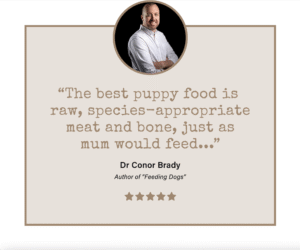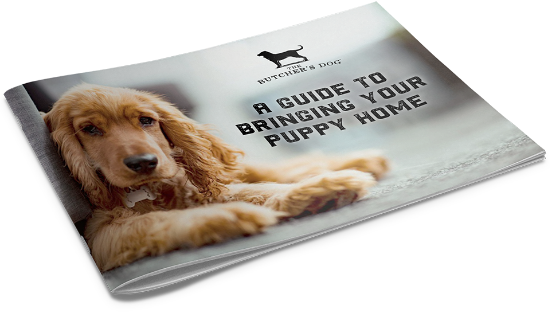It’s one of the great paradoxes of modern pet care. Our dogs are more loved, better fed (or so we thought), more regularly vaccinated, and more frequently treated for parasites than ever before. And yet, they are getting sicker not healthier.
The most alarming trend? Cancer. Dogs in the United States are now diagnosed with cancer at ten times the rate of humans – around 5,300 out of every 100,000 dogs, compared to just 500 per 100,000 humans. That’s a number that should stop any dog lover in their tracks.
And it raises a powerful question: If we’re doing everything “right,” why are our pets falling apart?
The Rise of Chronic Illness in Dogs
Alongside cancer, there’s been a notable increase in a host of other chronic diseases in dogs, including:
- Pancreatitis
- Autoimmune disorders
- Chronic skin issues
- Digestive disorders like IBD
- Kidney and liver disease
Conventional veterinary wisdom often falls back on genetics or “bad luck” as explanations. But if you ask holistic veterinarians and nutritional researchers like Dr. Conor Brady (author of Feeding Dogs), the answer lies elsewhere: in the environment and most importantly, in the food bowl.
Genetics Loads the Gun, Environment Pulls the Trigger
It’s now widely accepted in human oncology that more than 90% of cancer is caused by environmental factors, not inherited genes. And in dogs, the case is even stronger. Why?
- Most dogs live relatively short lives, which reduces the impact of hereditary disease
- Purebred dogs, often cited as genetically fragile, still thrive when fed and raised correctly
- Environmental exposures (diet, pollution, medication, lifestyle) act more rapidly in dogs due to their shorter lifespans
In other words, cancer in dogs isn’t just fate. It’s largely a man-made problem and one we can begin to reverse.
The Ultra-Processed Pet Food Problem
If you were to trace a single root cause behind the explosion in canine cancer rates, it would be the rise of ultra-processed pet food – namely, kibble and canned food. These foods now dominate the market, with an estimated 90% of dogs eating dry or canned food daily.
But here’s the problem: kibble was never designed with health in mind. It was designed for shelf life, convenience, and profit.
Inside your average bag of “premium” kibble, you’ll find:
- Low-quality, rendered meats, often from non-human-grade sources
- Fats that are rancid or chemically preserved
- Excess salt and synthetic flavour enhancers
- Artificial vitamins to compensate for what’s been destroyed in processing
- Up to 50% refined carbohydrates – even in “grain-free” versions
That last ingredient is the most concerning when it comes to cancer. Because cancer cells are glucose junkies. But more on that in Chapter 2.
Early Warnings from the Science
The link between processed food and disease isn’t just theoretical. In 1998, veterinary oncologist Dr. Gregory Ogilvie published a landmark paper showing that reducing carbohydrates in the diet slowed tumour growth in dogs with lymphoma.
More recently, research by Dr. Conor Brady and the University of Helsinki showed that raw-fed dogs were significantly less likely to develop chronic illness than those fed kibble. In one study, puppies fed a raw diet in early life had much lower rates of allergies, skin conditions, and digestive disease later on.
So why aren’t vets shouting this from the rooftops?

The Influence of Pet Food Corporations
Major veterinary schools and clinics are often sponsored by large pet food manufacturers. Hills, Royal Canin, and Purina not only supply free product to students and clinics – they also help shape curriculum. The result? Many vets leave school knowing far more about disease treatment than about disease prevention, especially through diet.
Prescription diets like Hill’s “ONC Care” (marketed for dogs with cancer) are still made from:
- Whole wheat and corn gluten meal (carb-heavy fillers)
- Low-grade chicken rendered at extreme heat
- Fish oil that has been oxidised through processing
- Ground pecan shells (yes, really)
No clinical trials. No fresh ingredients. And no understanding of canine nutritional biology.
A New Way Forward
If we want to change the trajectory of canine health, we must look past marketing and convenience and return to the fundamentals of biology. Dogs are facultative carnivores. They are not adapted to eat grains, starches, and synthetic additives in high quantities.
Instead, they need:
- High-quality animal proteins and fats
- Minimal carbohydrates
- Fresh, bioavailable nutrients from real food
- Clean water and low toxin exposure
In Chapter 2, we’ll dive deep into the metabolic connection between carbs and cancer – and explain why tumours light up for sugar like moths to a flame.
References
- Brady, C. (2020). Feeding Dogs: The Science Behind the Dry vs. Raw Debate
- AVMA Cancer Prevalence Report, 2020
- Ogilvie, G. (1998). Nutrition and Canine Lymphoma
- University of Helsinki Raw Feeding Studies (2017–2020)
- Shojai, A. (2022). The Truth About Pet Cancer (documentary series)



























































